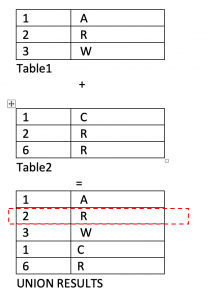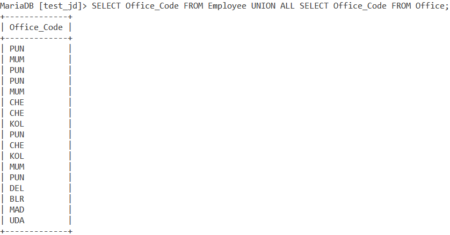

In MySQL, you can produce a cross join using an inner join without any match conditions. None of values that only existed in one of the tables are displayed.Īs mentioned above, MySQL also uses this format to produce cross joins. If you represent the results as a Venn diagram of the component tables, an inner join allows you to represent the overlapping area of the two circles. For example, if the first table has a value of "blue" in the comparison column, and the second table has no record with that value, that row will be suppressed from the output. Any rows in the constituent tables that did not have a matching counterpart in the other table are removed from the results. Here is a typical example demonstrating the syntax of an inner join:Īn inner join is the most restrictive type of join because it only displays rows created by combining rows from each table. For other database systems, INNER JOIN and CROSS JOIN are often two separate concepts, but MySQL implements them in the same construct. In MySQL, this can be specified using either INNER JOIN, just JOIN, or CROSS JOIN. The default join is called an inner join. Understanding how each type is constructed will help you determine which is appropriate for different scenarios. Various types of joins are available, each of which will potentially produce different results. Although primary and foreign keys are only used by the database system to maintain consistency guarantees, their relationship often makes them a good candidate for join conditions. This impacts what happens to the rows from each table that do and do not have a match on the join condition.įor the sake of convenience, many joins match the primary key on one table with an associated foreign key on the second table. The type of join and the join conditions determine how each row that is displayed is constructed. The join will produce six different rows for that value representing the various combinations that can be achieved.

Matched with this is a column from the second table that has three rows with that value. For example, imagine you have a column being compared from the first table that has two records with a value of "red". Multiple rows may be constructed from the original tables if the values in the columns used for comparison are not unique. The SELECT portion of the query can be used to specify the exact columns you wish to display. In a join, each resulting row is constructed by including all of the columns of the first table followed by all of the columns from the second table.

How microservices and monoliths impact the database.Syncing development databases between team members.Troubleshooting database outages and connection issues.What is connection pooling and how does it work?.Top 8 TypeScript ORMs, query builders, & database libraries: evaluating type safety.Top 11 Node.js ORMs, query builders & database libraries in 2022.Introduction to MongoDB Aggregation Framework.Introduction to MongoDB database tools & utilities.Working with dates and times in MongoDB.Introduction to MongoDB connection URIs.
#Mysql union in view how to#
How to query and filter documents in MongoDB.How to manage databases and collections in MongoDB.How to manage authorization and privileges in MongoDB.How to manage users and authentication in MongoDB.Introduction to provisioning MongoDB Atlas.How to export database and table schemas in SQLite.
#Mysql union in view update#


 0 kommentar(er)
0 kommentar(er)
